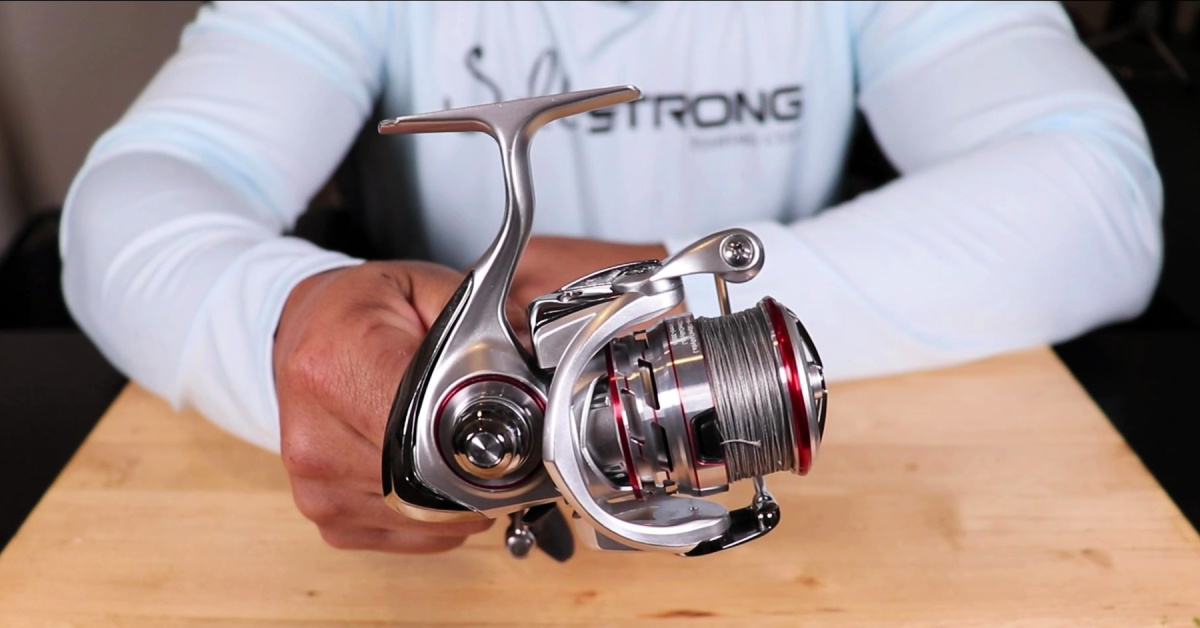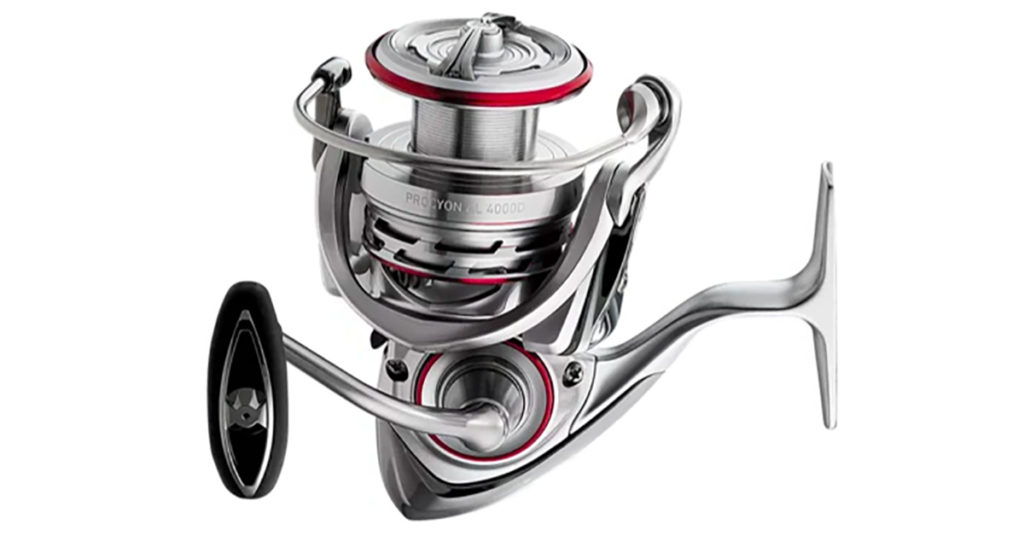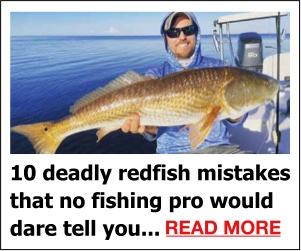Daiwa Procyon Reel Review: Pros, Cons, & On The Water Action
- By: Tony Acevedo
- on

It’s reel review time!
The new Daiwa Procyon AL reel is buttery smooth, super rigid, and has a great-looking profile.
But how does it hold up on the water?
In this video, you’ll learn about the pros and cons of this reel and see it in action.
Check it out below!
Daiwa Procyon AL Reel Review [VIDEO]


Check out the unboxing and product specifications from our own Head of Tackle:
After using this reel for a few months, I can finally put together an accurate list of pros and cons.
Here it is:
Pros:
- Lightweight aluminum frame and body
- Corrosion-resistant and holds up well to saltwater
- Super smooth drag that is easy to fine-tune and automatically adds and retracts drag while you fight a fish
- The stiff arm does not flex when fighting larger fish
Cons:
- An issue with wind knots on the water (but switched out the line and no further issues!)
Conclusion

I’ve actually enjoyed this reel a lot more than I thought I would!
It’s comparable to the Shimano Stradic FL, but actually has a smoother drag system.
Now the good news is that we carry these in our tackle shop.
But the bad news is that we have a very limited supply and we will not be restocking them.
You can get this reel from our shop here (while supplies last):
And if you want 20% off of this reel, as well as all of the other gear in our shop, click here to join us in the Insider Club.
Have any questions about this reel?
Let me know down in the comments!
Related articles:
Related categories:
STOP WASTING TIME ON THE WATER!
Do what the “SMART ANGLERS” are doing and join the Insider Club.
Here’s what you’ll receive today when you join:
- Weekly fishing reports and TRENDS revealing exactly where you should fish every trip
- Weekly “spot dissection” videos that walk you through all the best spots in your area
- Exclusive fishing tips from the PROS you can’t find anywhere else
- Everything you need to start catching fish more consistently (regardless if you fish out of a boat, kayak, or land).










I have the 2500 Procyon AL and it only casts approximately 75% of the distance of the Shimano Stradic 3000 with the same line, rod, and lure. Is this typical?
That is not typical at all… spinning reels don’t make much of a difference in terms of casting distance because don’t do much other than just get out of the way when letting the line shoot out. The biggest factor in casting distance other than the line diameter is the gap from the top edge of the spool to the outer layer of the line on the spool… the smaller the gap, the less distance the line has to go around the spool which means that the casts will go much farther. So my guess is that the Procyon has more of a gap compared to the Shimano. Otherwise, check the edge of the Procyon spool to make sure there aren’t any snags (that would significantly decrease casting performance while also damaging the line).
Thanks. Upon closer inspection it was a faux pas on my part. The braids are the same color, but the braid on the Diawa is heavier. Embarrassing for me, but glad to have solved the problem. Thanks, Steve
Used the 4000 for 50pd tarpon on arties. It was great!! Ps i fish out of a yak as well. Really held up well!
Solid!
Thanks Tony-What size reel are you using in the video? A 2500 or 3000?
I also am a Kayak fisherman so it’s important to have the correct equipment
before launching.
Thanks
DW
My pleasure David! I’m using the 2500
I have the same problem with J8
The problem is not the reel
I using ci4 3000
Unless the reel/spool is grossly underlined (as in not enough line on the spool) or too much line, and around the price point of reels of the Procyon, I would agree Tsanko, the reel is not the issue with wind knots; the issue is most likely the rod, in particular the guides and to a lesser extent, the blank.
It’s very easy to immediately blame the line since that is where the end result of the problem is visible.
Even so, there are many equipment variables which can cause wind knots casting braid. Braid’s inherit lack of memory, smaller diameter (why 8 strand is EP coated), line tension on the spool, spool lip, guides, rod blank can individually or collectively increase the chances of wind knots.
I take extra care with braid when it comes to the variables I can control. Purchasing quality rods with guides that work for me and lining a spool.
One of the best ways I know to ensure good line tension on the spool after installing new line, is at a slow, straight line speed, as your boat moves forward in a large un-congested body of water, let out the newly installed line with a 1/4 oz jig head/paddle tail (or jerk bait) attached aft of the boat until reaching the end of the newly installed line at the backing. Then slowly reel in the line. I pass the braid through a loosely held clean damp microfiber cloth just before the spool to remove contaminates before reaching the spool. I have found this technique to provide about the right line tension on the spool.
IMO, getting all the variables in-sync that work for you will go a long way preventing and mostly eliminating “wind knots”.
I to have this reel, the 2500 version, and like it as well.
Tony, I thought “wind knots” were more of a function of the rod guides than the reel (spool design). And perhaps, casting into a stiff breeze.
Obviously, if line is coming off the spool faster than the line can get through the guides, you end up with “wind knots”. Many rod manufacturers have gone too much smaller (as small as 2.5mm on some rods) tip guides on some models.
As such, “wind knots” are an aerodynamic issue directly related to line speed and parasitic drag (of both the Form and Friction variety). Parasitic/Form/Friction drag is drag caused by line contact with the guides. Parasitic drag will cause the line speed to further decrease as the line approaches the tip guide and in some cases, line speed is much slower at the tip than the line coming off the reel. Thus, one ends up with a bird nest along the rod generally near the first or second guide from the reel.
The bigger the guides on a reel, the less parasitic drag induced to the line. However, smaller guides allow for the line to stabilize into a tighter, straight line path coming off the reel and through the guides down the rod thereby enhancing accuracy and distance under ideal conditions (ideal being the all variables associated with the cast including the human, equipment and environmental conditions).
I’m not a fan of “micro” guides. Not because of wind knots, but rather, it is difficult to cast knots through micro and small guides at the tip. Yes, we shouldn’t be casting knots though the guides; but, it happens.
For spinning reels, I think it is best to use the 8 strand braid, especially with smaller guides. I’m pretty sure all 8 strand braid is Poly-Ethylene coated making for a much smoother line compared to non-PE 4 strand. Further, 8 strand is more round in shape than the 4 strand braid which is actually more of a square shaped line. Sharp edges/corners create more parasitic drag (look at modern aircraft design Boeing 787/Airbus 350 for considering smooth curvilinear shapes moving through air with the least amount of parasitic drag).
Braid line manufacturers are developing smaller diameter, increasing the number of strands in braided line in an attempt to make stronger and better aerodynamic/hydrodynamic fishing lines.
Spool lip design can also influence how the line exits the spool, but, I see very little difference between spool designs from manufacturer’s at the $150-$250 price point.
I am not affiliated with any fishing equipment company. Just a retired airline pilot living and fishing along the SC coast.
I am fortunate in that I live just up the Coastal Highway from Shimano USA HQ in North Charleston, SC. It’s always a pleasure to visit with these most knowledgeable people who are always willing to share information and advice. “The Customer Experience Center” is a place to drool over some super nice, and in some cases very expensive fishing equipment that only a winning Mega Millions ticket will allow me to purchase!
I did not mean to get on such a long winded tangent about my perception of wind knots in my above post.
The Diawa Procyon 2500D-XH AL LT has been a very pleasant surprise since I had been unable to source my favorite 2500 reel manufactured by a competitor.
My Procyon 2500 is a very nice reel and I have had no issues with it the past several weeks. It has landed numerous spec trout, a few slot redfish and a few founder beginning to make their presence known inshore. The drag is smooth.
Ergonomics are a bit different compared to my favorite 2500 series spinner. The Procyon body sits further forward on the reel stem and the handle knob is further away from the reel body. I wouldn’t deem it a negative, just a different feel. But it does change the balance of the rod compared to my competitor’s 2500.
And I have not experienced wind knots using the TFO Tac Inshore 7’6″ M/FA rod. I fished the reel on my Bulls Bay Bolt 7’6″ M/FA rod this morning and no casting issues with it either. And the guides on the Bolt are as small as I will use, especially at the tip of a rod.
I have the reel spooled with 10# Ande Premium Mono for backing and 150y of 10# Diawa J-X8 Gray-Light line.
Most of my fishing is in and around oyster bars so I generally go with heavier braid line than I would use fishing exclusively around grass/sand flats.
Hey Bill thank you for the great feedback!
I have been using power pro for years with various rods and reels and have had very little issues with wind knots (being mindful of over spooling, keeping tension on the line, etc.). The 8 grand line is very limp compared to the power pro that I use. I swapped out the j braid with power pro and haven’t had a single wind knot using the Procyon and the same rod I’ve been using. The heavier j-braid tends to have less issues from what others have told me (20# and up).
Some lines, I feel, definitely need a little more attention to detail than others when it comes to using and spooling for sure.
Bought this reel a few months ago myself and love it! I also had a Shimano Stradic before I bought this reel. This one is quickly becoming my more preferred reel to use. Surprised to hear the shop will not be restocking them? I don’t understand, you just gave us a great review of how great it is, then why is salt strong discontinuing selling them? I am considering buying a second reel but I want to see how my current one feels with the new bull bay and/or a TFO rod (when and/if they ever come in stock) before I purchase a second one.
Hey Andre! We haven’t seen much interest in them and they’ve been on the shop page for quite some time now. If we see more interest we may be able to keep them. We want to be sure we are carrying items that we stand behind, but also that our members show interest in.
Tony, What was the reel model of the Procyon were you using? Thanks!
Hey Thomas!
I was using the 2500D-XH
Over the years I’ve been impressed with many Daiwa reels but getting parts is always a nightmare and it get progressively worse as the reel ages.
Nowadays its tough to get parts for anything. Almost better off just getting more than 1 reel! I baby all of my equipment and rinse/dry thoroughly after every trip (as soon as i get off the water). I’ve seen a huge increase in the lifespan of my gear by just doing a quick rinse and dry immediately after getting off the water.
Can’t decide between this and the BG MQ, looks like both are pretty similar. Thanks for the review!
Thats a tough call! I personally haven’t used the MQ enough to say, but from what I hear it is a solid choice. The MQ has a bit more water resistance than the Procyon. I wouldn’t use the Procyon under “heavy salt” conditions like nearshore or offshore. It’s more of a brackish/freshwater reel. The MQ is more suited for all around.
Tony, I had the same issue first time out. I also found it was cured by under spooling it a bit. I think it has to do with the design of the spool. Once I corrected it I no longer had a wind knot issue.
Good stuff! I wasn’t a fan of having the reel under spooled so I went with the different line and can fill it up properly without any issues. 10lb Power Pro Slick V2